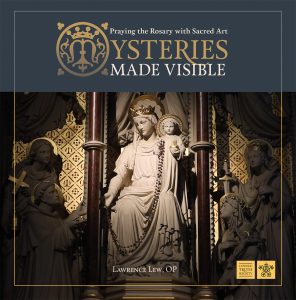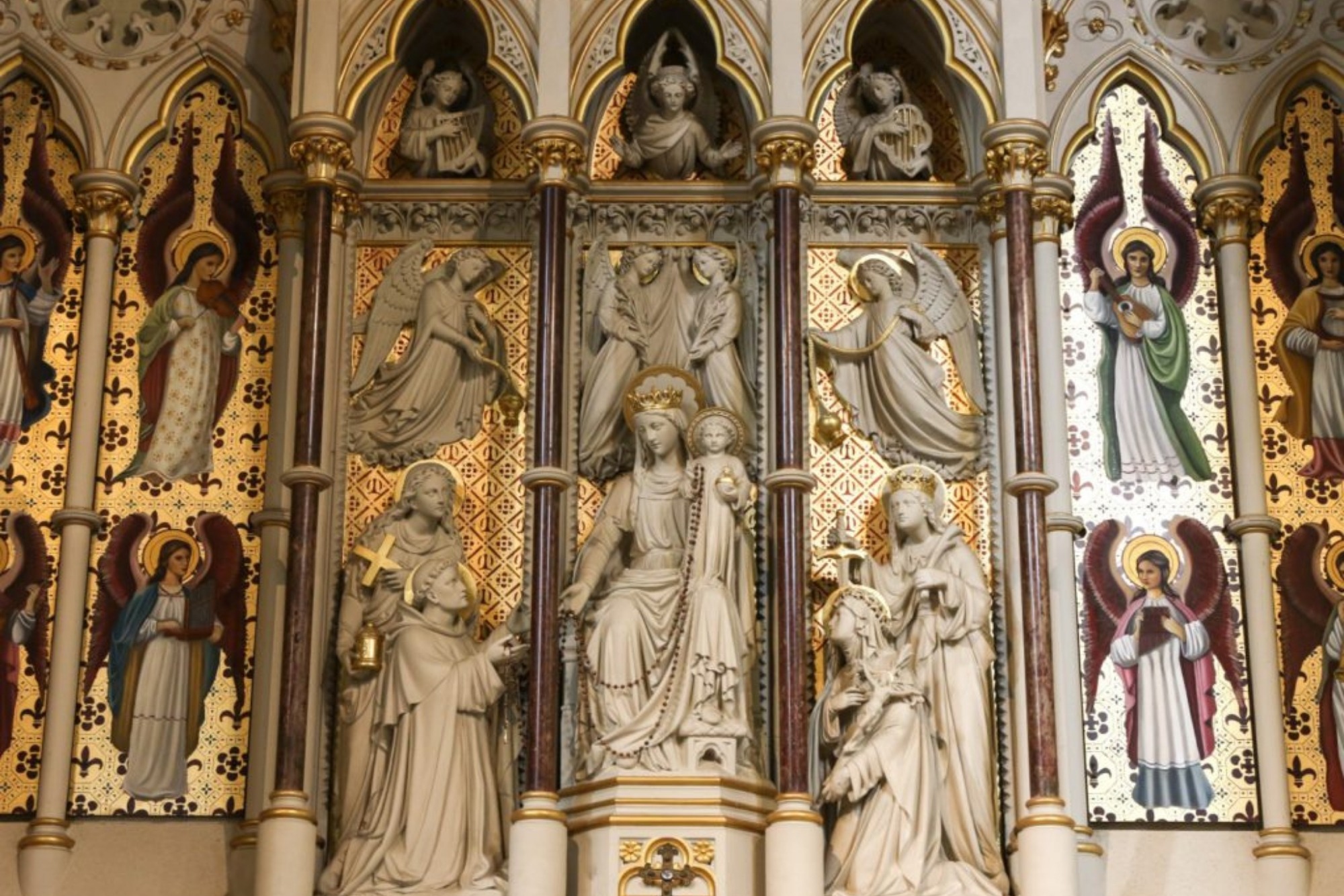People often ask me how best to pray the Rosary, or they tell me that they’ve struggled with the Rosary and find it difficult. And some have thus given up on the Rosary. My own experience has also been one of struggle with the Rosary, and my mind wanders, I get distracted, or I find myself just going through the paces but not really concentrating on the meditation.
However, I find that having sacred art before my eyes does focus my mind. Nowhere is this more apparent to me than in my own Rosary Shrine church in London, where each mystery of the Dominican Rosary is depicted in sculpture or stained glass. As I walk from one Rosary Chapel to the next, slowly praying the ‘Hail Marys’ I enter these distinct chapels dedicated to each of the mysteries, and it is as though I am entering the mystery itself, and as I gaze on the sculpted tableaux, I find myself interacting with the art, the imagination is engaged, and the scenes come to life in my mind’s eye. This engagement of intellect and imagination is vital, it seems to me, when we meditate on the Rosary, and my hope is that this book [Mysteries Made Visible – click here] can guide us in doing so. Occasionally, music can also help to focus the mind.
The assumption of the Rosary Confraternity, too, which does not require its members physically to pray together, is that one can pray the Rosary alone, at one’s own pace, and in a place and manner of one’s own choosing: pray it at home, sitting in the garden with your morning cup of coffee, kneeling by your bed, or at school, in the office, while waiting for the train or bus, while standing in a queue, or whenever you have spare moments. Very often we reach for our smartphones, but perhaps we can reach for our rosaries instead.
As the Rosary was preached and used by itinerant Dominican friars, it seems likely that these beads are our ‘mobile praying device’ to be carried on journeys and to be prayed as we travel from place to place; many of my Dominican brothers have said that they prefer to pray the Rosary while walking. Praying the Rosary in this way, especially when we’re using public transportation or walking down the street is also a beautiful public witness of prayer, and it is a way of encircling our neighbourhoods and parishes with prayer.
However, I think it is most important that we do not overload ourselves by praying the Rosary all in one sitting. As St Thomas Aquinas said, we should stop praying when it becomes tedious and it no longer increases our devotion. Pope Benedict XVI once said that he found it too intense to pray the Rosary all at once, and so he broke it up during the day, saying a decade or two now and again. St Louis de Montfort, although he encouraged groups to pray the Rosary together, also permitted busy people to pray just one decade at a time, for it is better to pray one decade well than to rush through five decades of the Rosary.
My personal practice is to say a decade or two at a time, beginning the morning with a decade of the Rosary and offering the day to God. If you check your social media accounts, use this time as a chance to gather prayer intentions, and then pause and offer a decade or two of the Rosary for those intentions. In this way, before work, or between meetings, or in the middle of some writing, or after cooking a meal, punctuate the day with more decades of the Rosary so that, as St Paul says, we can “pray at all times in the Spirit, with all prayer and supplication” (Ep 6:18).
I usually aim to say at least five decades a day, but through this method of interspersing the day with the Rosary, I find that by the end of the day, I can often manage fifteen decades with relative ease. The day is thus suffused with thoughts of Christ and of his saving love for us; the heart thus increases in devotion for God; and so we are led by the Rosary to become more like our Blessed Mother Mary in our faith, our hope, and in our love. No wonder Our Lady has given us a daily prescription of five decades of the Rosary a day, because if each day is directed towards Christ in this way, then our whole life will be, like Mary’s, surrendered to God’s love.
The Rosary, therefore, is for life because it leads us to the fulness of life, to union with him who is the Resurrection and the Life (Jn 11:25). Therefore, St Paul says: “Rejoice always, pray constantly, give thanks in all circumstances; for this is the will of God in Christ Jesus for you.” (1 Th 5:16-18)
Image: © Fr Lawrence Lew OP
 This blog is extracted from Mysteries Made Visible: Praying the Rosary With Sacred Art, where you can learn to pray the Rosary more deeply with Fr Lawrence Lew’s stunning photographs of sacred art, which in turn inspire his contemplations of each Mystery of the Rosary.
This blog is extracted from Mysteries Made Visible: Praying the Rosary With Sacred Art, where you can learn to pray the Rosary more deeply with Fr Lawrence Lew’s stunning photographs of sacred art, which in turn inspire his contemplations of each Mystery of the Rosary.
Discover the inspiring meditations and stunning sacred art by ordering your copy of Mysteries Made Visible.

